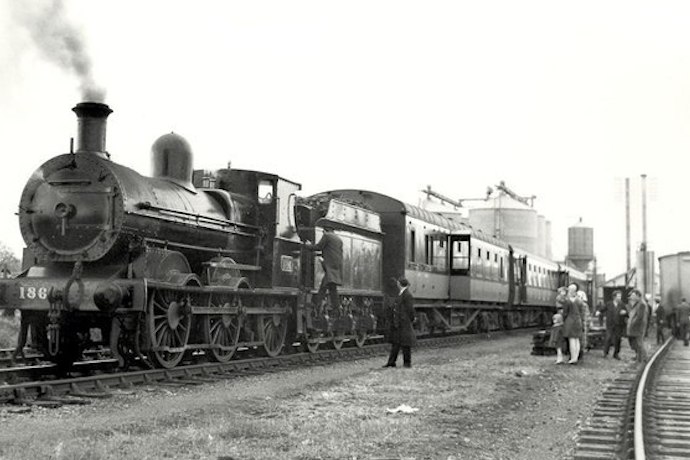
There are so many pieces of classical music inspired by trains; it’s almost impossible to whittle them down to a top-5 list. Still, we’ve done our best for you. Here are five of the most significant examples, and feel free to write in and tell us if you think we’ve missed anything crucial off the list.
1.Different Trains by Steve Reich
First up in our list of classical music inspired by trains is this 1988 piece for string quartet and tape. For it, Reich drew on memories of his childhood train journeys between New York and Los Angeles during World War II, contrasting them with the horrific train journeys of Jewish people to concentration camps in Europe during the same period. Of particular note was Reich’s use of recorded train sounds and his novel ‘speech melody’ technique, which involved recording spoken phrases from interviews with his former governess, a Pullman porter, and Holocaust survivors, then transcribing them into musical notation. The result was both groundbreaking and haunting.
Read: Feature about Underline, a piece exploring the ‘psychology of travelling.’
2. Pacific 231 by Arthur Honegger
The Swiss composer Arthur Honegger once said: “I have always loved locomotives passionately. For me they are living creatures and I love them as others love women or horses.” This 1923 orchestral piece, showcasing the harmonic innovations of the French avant-garde, makes that passion obvious. But while it is often interpreted as a literal depiction of a train journey, Honegger’s intentions were more abstract, focusing on the musical representation of acceleration and rhythm rather than simply imitating train sounds.
Read: 5 pieces of music inspired by comedy
-
To keep up to date with our latest reviews, interviews and news, subscribe to our newsletter
3. The Little Train of Caipira by Heitor Villa-Lobos
Concluding the Bachianas Brasileiras No. 2 suite, this 1930 piece of classical music is inspired by the sounds of a small Brazilian train as it rattles through the countryside. Villa-Lobos skillfully uses orchestration to imitate the sounds of the train, including its whistle and the rhythmic chugging of its wheels on the tracks, creating a piece that not only showcases his compositional skills but also captures a slice of Brazilian culture and landscape.
Read: New TV series to profile the UK’s best train station pianist
4.Étude aux chemins de fer by Pierre Schaeffer
Next up in our survey of classical music inspired by trains is this curiosity by the French composer and engineer Pierre Schaeffer. As an engineer at Radiodiffusion Française, Pierre Schaeffer had access to and knowledge of the most cutting edge audio equipment. In 1948, he used it to record, and then manipulate, the sounds of train noises at the at the Gare des Batignolles, creating one of the first ever examples of musique concrète, a form of electroacoustic music that uses recorded sounds as raw material. Initially Étude aux chemins de fer was met with hostility, with critics describing it as un-musical and “just noise.” However, it has since gained recognition for its innovative approach to sound composition.
Read: 5 pieces of classical music inspired by sport
5. Kopenhagener Eisenbahn-Dampf Galopp by Hans Christian Lumbye
The year 1847 saw the opening of the first railway line between Copenhagen and Roskilde. This was a significant milestone in the development of Denmark’s railway network, which would go on to play a crucial role in connecting the country’s cities over the following decades. And it proved inspirational to the Danish composer Hans Christian Lumbye, known as the ‘Strauss of the North’, who wrote this energetic galop piece in tribute to the occasion, evoking the sounds and excitement of a steam locomotive.